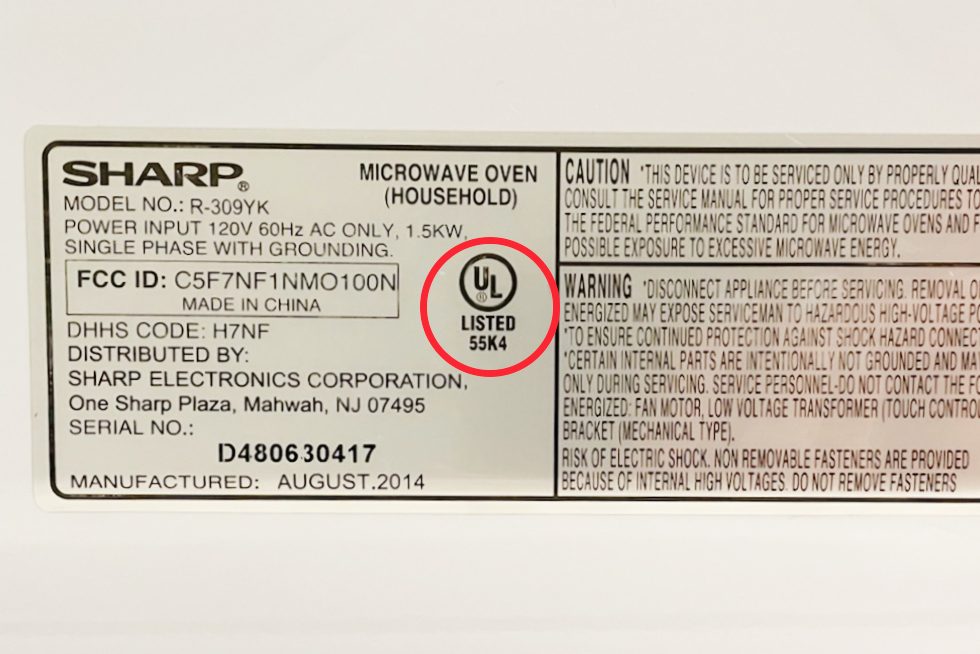UL is the gold standard of safety and compliance testing, but what is UL listed? Let's break it down.

What Is UL Listed and Why Does It Matter?

If you’ve plugged in an extension cord, swapped out a light fixture, or made a piece of toast, you’ve likely used a UL-listed product. The small UL mark you see on labels or stamped on products indicates they’ve been tested and certified for safety.
UL, or Underwriters Laboratories, is a global safety certification organization with over 100 years of experience in developing safety standards and testing products in the electronics and construction industries. The UL mark assures that a product meets rigorous safety requirements, helping reduce the risk of fire or electrical shock due to faulty wiring or poor manufacturing. In this article, we’ll explore what “UL listed” means, the types of products that carry the UL mark, and why it’s essential to your safety, with insights from licensed electrician Matt Cross.
On This Page
What Is UL Listed?
“This means the product has been tested and certified by Underwriters Laboratory,” Cross says, and will safely perform its job as intended. Products earn that certification by undergoing rigorous testing against standards developed by UL. These standards are designed to be acceptable to code enforcement authorities, like inspectors.
When you buy outdoor lighting for your front porch, you expect the lights will illuminate your entry without giving you an electrical shock, right? You presume the lights were checked for safe operation before they made it into your shopping cart. That’s what it means to be UL listed.
UL certification is voluntary for manufacturers. But government agencies like the Occupational Safety and Health Administration (OSHA), and code standards like the National Electric Code (NEC), require listed products for many installations.
Nonmetallic-sheathed cable, commonly used in residential wiring, is required by the NEC to be listed. If you remodel your home and choose an unlisted cable, the electrical inspector will not approve the project.
UL isn’t the only company approved to test and certify products, but it’s the most well-known. UL, Intertek, Eurofins and 18 other companies are currently approved to test and certify products under OSHA’s Nationally Recognized Testing Program. Code authorities know labs on OSHA’s list are reputable certification organizations.
What Products Can Be UL Listed?

Appliances, electronics and electrical components, motors, batteries, smoke alarms and automotive parts can be UL listed. Gas meters, containers for flammable liquids, lighting of all kinds and door hardware can be UL listed, too. So many things can be listed that UL created a searchable database to take away the guesswork.
Electrical and fire safety, as well as prevention of injury, are huge drivers of UL’s certification process. That’s reflected in the more than 1,500 standards currently available.
Plenty of things you might not think of as hazardous can be listed, too. Makeup and personal care products, packaging materials and even furniture can be listed.
UL will certify manufacturing processes, entire facilities and personnel. As technology becomes more advanced and consumers and lawmakers demand higher energy efficiency and sustainability, UL listing capability expands to meet the needs of the times.
Does UL Listing Matter?
Absolutely. “UL listed means the product has been tested to make sure it’s safe, especially in regards to fire ratings,” Cross says.
Consider two sets of outdoor cantina lights for your backyard deck, one listed and one not. The UL-listed set is certified for year-round outdoor suitability and electrical safety, and the cord has enhanced flex and strain relief components. The other might be a perfectly capable string of lights, but how would you know?
A UL mark is a quick way for consumers to determine a product was manufactured to a high safety standard. If you have a choice, go with the listed product every time. “Anything we install has to be approved by UL,” Cross says, “It’s a professional standard.”
UL listing also matters for DIY projects around your home. Remember, the NEC and other code bodies require certain installations and products be listed to be code compliant.
Before starting any project, particularly electrical, read and understand the relevant code for your project or consult with a licensed tradesperson. Buy approved products and follow the instructions included with the product. UL listing doesn’t cover “off-label” installations. “Be wary of products from websites like Wayfair or Amazon, as they may not have a UL listing,” Cross says.
What if you’ve done your due diligence and installed the UL listed cantina lights, but you come home to a melted mess at the end of the cord?
First, turn off the electricity before unplugging it, then tell UL. They’ll investigate the lights, follow up with the manufacturer if needed, and possibly put out a public notice. Always report suspected faulty products or counterfeit UL listings.
UL Listed vs. UL Recognized
- UL Listed: This mark refers to the entire standalone item, whether it’s a simple metal outlet box or a front-loading high-efficiency washing machine. The marks on these two products might look slightly different — the washing machine could have an energy efficiency notation on the mark, for example — but they will both be listed as a complete product.
- UL Recognized: This mark is used for components of products, not the finished product itself. The front-loading washing machine will have multiple UL-recognized parts, such as circuit boards, switches and an internal power supply. Each of those could also be made up of multiple recognized components.
About the Expert
- Matt Cross is a licensed electrician in the State of Massachusetts. He has over ten years of industry experience in residential and commercial work.

















